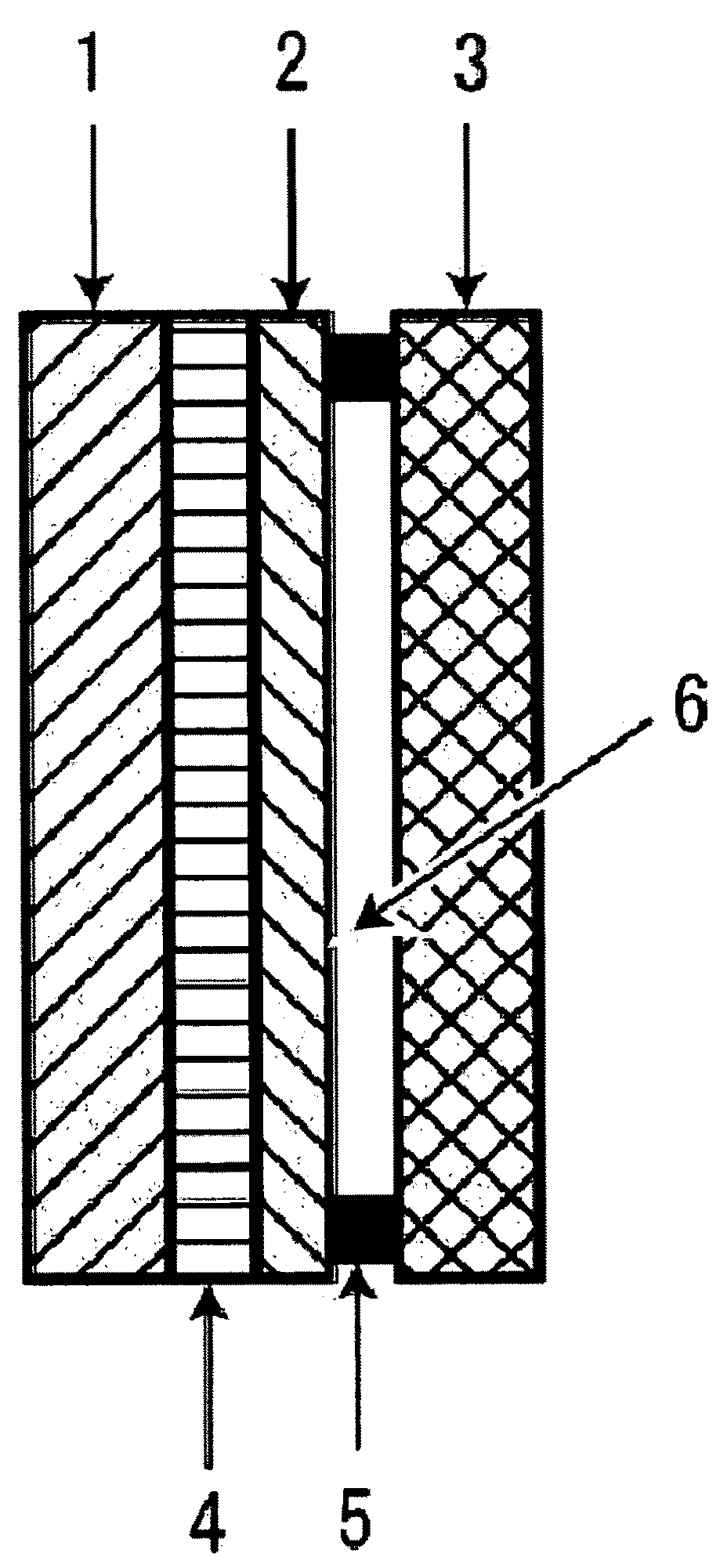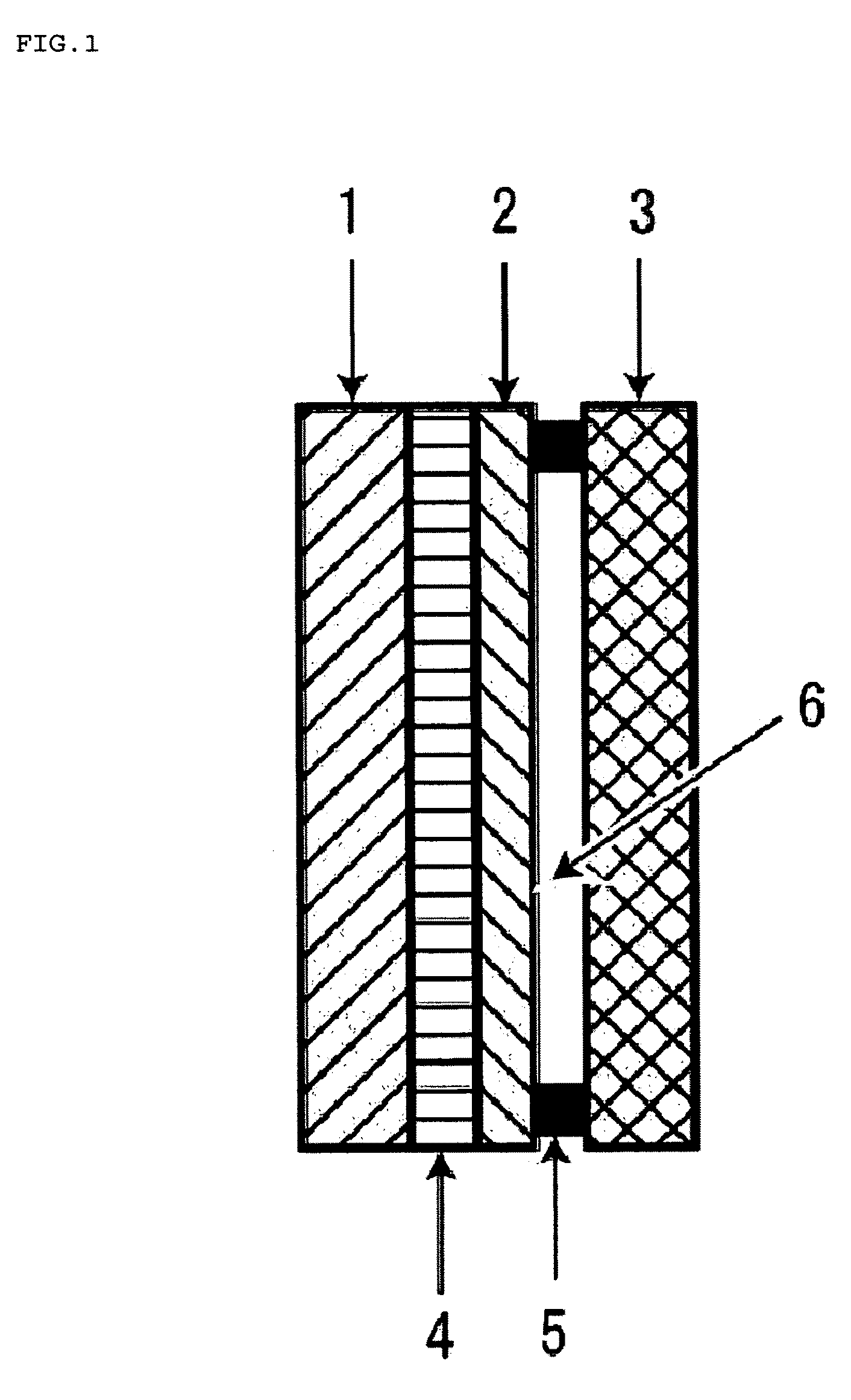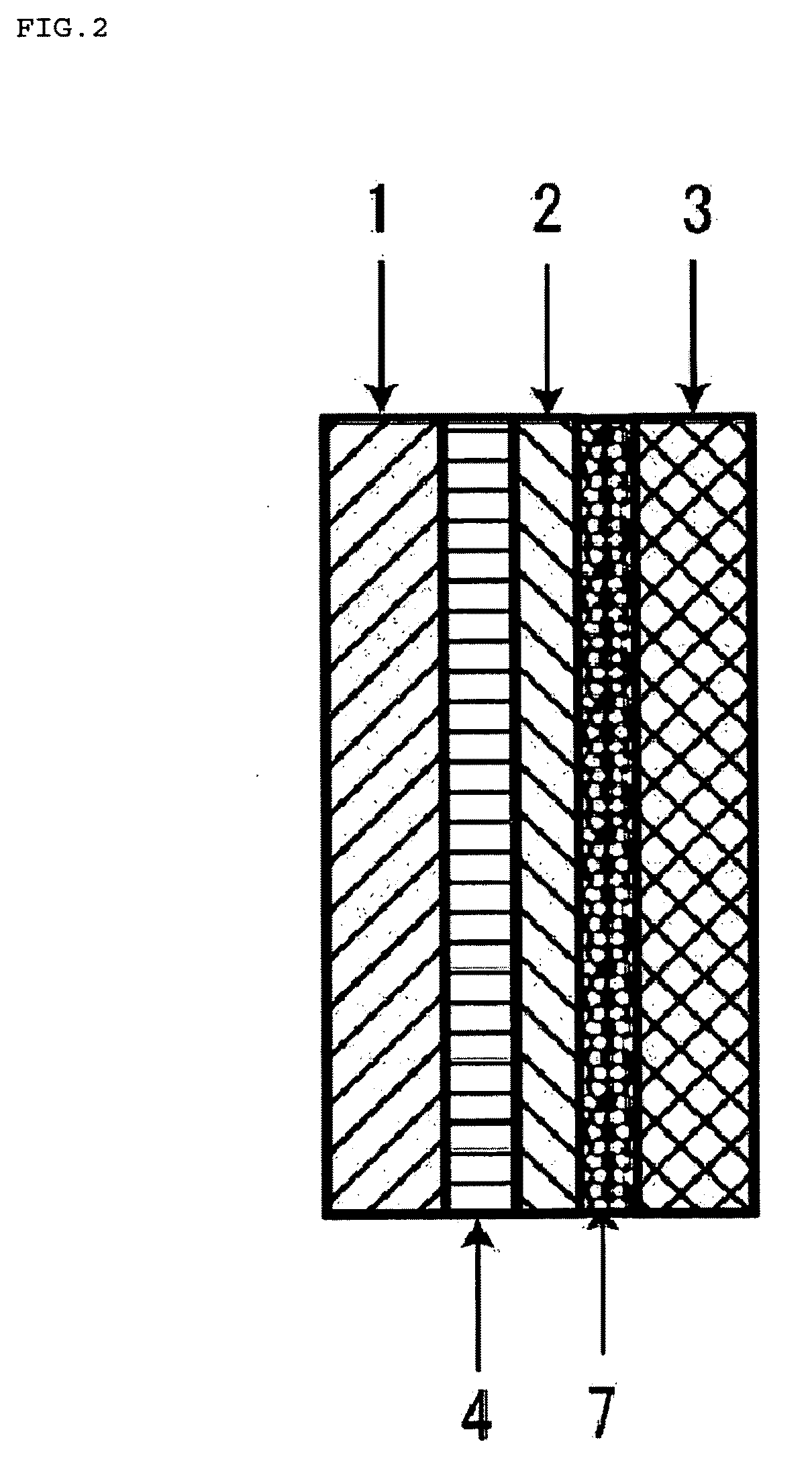Battery
a battery and battery technology, applied in the field of batteries, can solve the problems of battery capacity falling, battery being unable to give a high power, battery deterioration, etc., and achieve the effects of reducing production costs, facilitating catalytic effect effective, and facilitating production
- Summary
- Abstract
- Description
- Claims
- Application Information
AI Technical Summary
Benefits of technology
Problems solved by technology
Method used
Image
Examples
example 1
[0076][Formation of an Electrolyte Substrate]
[0077]As raw materials, the following were used: H3PO4, Al(OH)3, and Li2CO3 manufactured by Nippon Chemical Industrial Co., Ltd.; SiO2 manufactured by Nitchitsu Co., Ltd.; TiO2 manufactured by Sakai Chemical Industry Co., Ltd.; GeO2 manufactured by Sumitomo Metal Mining Co., Ltd.; and ZrO2 manufactured by Nippon Denko. These were weighed to set the composition thereof as follows: P2O5=37.5%, Al2O3=7.5%, Li2O=14.5%, SiO2=1.3%, TiO2=17.5%, GeO2=20.2%, and ZrO2=1.5% wherein each of the symbols “%” herein denotes % by mol. The components were mixed into a homogeneous state. Thereafter, the components were put into a platinum crucible, and then heated and melted in an electric furnace. At this time, the starting material was first decomposed at 700° C. to vaporize CO2 and H2O components. Next, the remaining material was heated to 1400° C., and melted at the temperature for 1.5 hours. Thereafter, the melted glass was cast onto an iron plate war...
example 2
[0080]A battery was formed in the same way as in Example 1 except that the following were laminated onto each other: a doughnut-shaped PTFE having a thickness of 5 mm and an opening of 15 mm diameter, as a spacer; and a Ni mesh (thickness: 0.1 mm, diameter: 16 mm, line diameter: 0.05 mm, mesh size: 100 mesh / inch), as a positive electrode.
example 3
[0081]A battery was formed in the same way as in Example 1 except that a doughnut-shaped PTFE having a thickness of 2 mm and an opening of 15 mm diameter was used as a spacer, and further a Pt mesh (thickness: 0.14 mm, diameter: 16 mm, line diameter: 0.07 mm, mesh size: 100 mesh / inch) was used as a positive electrode.
PUM
| Property | Measurement | Unit |
|---|---|---|
| porosity | aaaaa | aaaaa |
| porosity | aaaaa | aaaaa |
| particle diameter | aaaaa | aaaaa |
Abstract
Description
Claims
Application Information
 Login to View More
Login to View More - R&D
- Intellectual Property
- Life Sciences
- Materials
- Tech Scout
- Unparalleled Data Quality
- Higher Quality Content
- 60% Fewer Hallucinations
Browse by: Latest US Patents, China's latest patents, Technical Efficacy Thesaurus, Application Domain, Technology Topic, Popular Technical Reports.
© 2025 PatSnap. All rights reserved.Legal|Privacy policy|Modern Slavery Act Transparency Statement|Sitemap|About US| Contact US: help@patsnap.com



